There’s a whole new generation of would-be film photographers who want to explore their creative side by shooting film. Some have friends who can point them in the right direction, but for all the rest… you have Casual Photophile. In this article we’re answering the first question that most new shooters ask – Which camera should I buy?
There are a multitude of YouTube channels dedicated to film photography, including ours, and it’s easy for new shooters to become overwhelmed by the barrage of ideas and opinions. Everyone has a favorite film camera, and a lot of the opinions on YouTube and elsewhere don’t take into account the needs and perspective of people who are totally new to the hobby.
The aim of this article, therefore, is to speak directly to newcomers in a frank and honest way. No hype. No brand worship. No aspirational nonsense asserting that you need a Leica, Mamiya 7, or a Hasselblad X Pan.
We’re here to tell you, depending on your needs and budget, which camera to buy. Every camera on this list will cost no more than $100 from a reputable camera shop (often far cheaper on eBay), will be reliable, and will do everything a newcomer needs their first film camera to do.
For Those Who Want to Simply Point, and Shoot!
The period between 1990 and 2002 was the high point for 35mm film cameras. Even entry-level point-and-shoot cameras were amazing – full of high tech features, reliable electronics, and great lenses. These pocket cameras had autofocus, zoom lenses and ran off of small and inexpensive batteries. Every major manufacturer made them by the tens of thousands and they sold just as many – the result today is that the used market is overflowing with great point and shoot cameras.
If you’re the type of new film shooter who wants to achieve the gorgeous look of film photographs without diving headfirst into learning all about aperture, shutter speed, ISO, and the complicated math of exposure using a manual or semi-auto camera, then you need an advanced point and shoot.
Here are three point and shoot film cameras that make amazing images with zero effort. They’re reliable, effective, and cost less than $100.
Pentax IQ Zoom Series Cameras (also known as Espio series cameras)
This series of point and shoot cameras was covered in 2020 by our fearless leader, James, in his article headlined Ten Great Point and Shoot Cameras from $25 to $99 and for good reason. Pentax build solid, dependable cameras, and they always have. And their range of point and shoots (called IQ Zoom and Espio, depending on the country in which where they’re sold) come in many varieties. Most of them have high spec auto-focus and zoom lenses – some are even waterproof.
Pentax made their name by giving the photography enthusiast the right tools for their needs and that was prevalent with their offerings in the point and shoot market. If someone tells you there’s a Pentax for everyone, that could very well be true.
Another big bonus – they’re cheap. If you’ve budgeted $100 to launch into film, you can buy a great IQ Zoom camera and still have money for a roll of film and a coffee.
[Find a Pentax IQ Zoom on eBay here]
Olympus Trip XB AF 44 (also known as Olympus Trip XB 41 AF / Olympus Trip XB 40 AF / Olympus Trip XB 400)
Olympus were also a company that gave the photography enthusiast the tools they needed. They were also responsible for perhaps the greatest ad campaign in history when renowned photographer David Bailey led the ads for the Olympus Trip. That campaign sold Ten Million Cameras. However, the resurgence in popularity of the original mighty little Trip has put it over our budget, and don’t even look at the price of an Olympus Mju…. Seriously… Don’t.
We chose the successor to that pocket powerhouse, the Olympus Trip XB AF range. For less than $100 the Trip XB AF range of cameras is equally as capable as the original Mju and substantially cheaper. With their fine Zuiko lenses the TRIP XB AF range have enough bells and whistles to make them a joy to use.
Best of all they’re dead simple, making the Olympus a great choice for people who really want to point and shoot, and nothing more. Put batteries in, load the film and have fun.
[Find an Olympus XB on eBay here]
Canon Sure Shot Series
The Canon Sure Shot series sold an incredible number of units throughout the ’90s and into the 2000s. In fact, a Canon Sure Shot was the last Canon film camera ever made (the Canon Sure Shot 90UII was designed and released as late as 2005). Canon began the Sure Shot range with solid dependable cameras with great lenses, and they added features and technology over the next 20 years.
Today you can buy an advanced spec Canon Sure Shot for between $50 and $100 and it will simply work until the Photography Gods commend its long and distinguished service with a seat in Camera Heaven. When the human race wipes itself out, a cockroach will be taking pictures of what we leave behind using a Canon Sure Shot.
I suggest buying one of the models from the ’90s or 2000s. These will be from the “U” range of Sure Shots (examples; Sure Shot 90U, Sure Shot 120U, etc.). The larger the number (usually) the longer the zoom lens. And all of these will have user controls for long exposure, flash photography modes, self-timers, and more. They’re among the more advanced point and shoots you’ll find.
[Find a Canon Sure Shot on eBay here]
For Those Who Want Creative Control
We’ve given you a few options to explore if you’re just looking to point and shoot. But what if you want to get a little more serious about photography? Beginners with this mindset need an SLR camera, and they really should buy a modern SLR with autofocus, auto-exposure, semi-auto modes, and all the other helping hands that come with an SLR film camera from the 1990s and 2000s. The problem is that Japanese camera companies were making 35mm SLRs for sixty years, and when it comes time to buy one it can get pretty confusing!
Here are three great model ranges that will work just like a modern DSLR, except these shoot film!
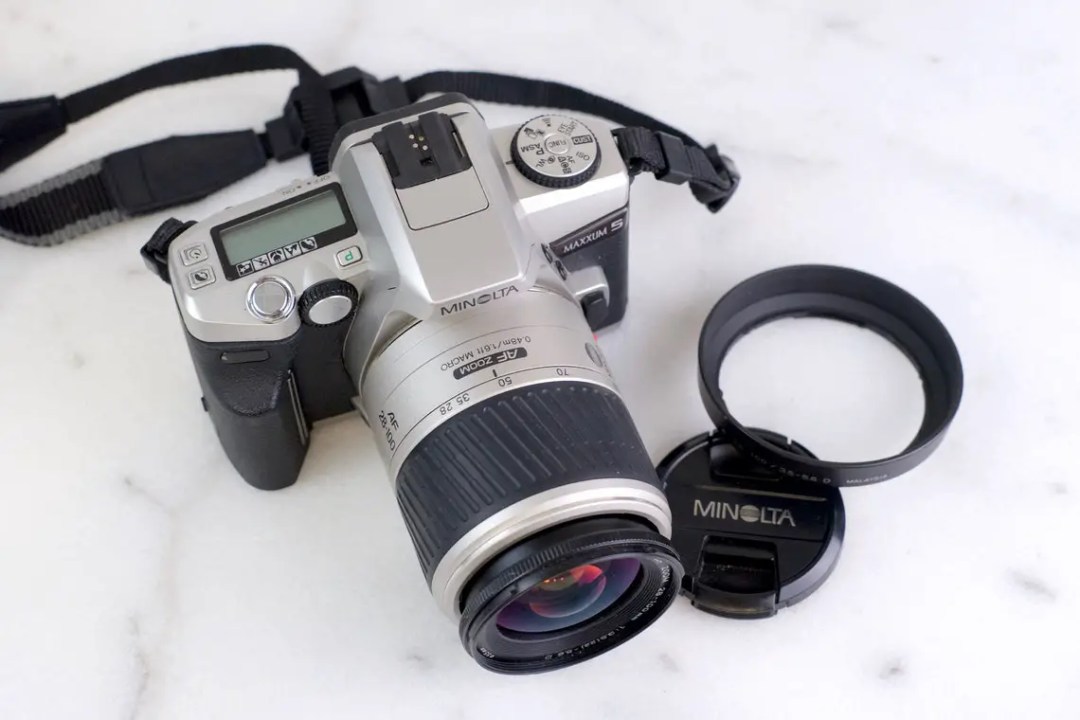
Minolta Maxxum 5 (also known as Dynax 5)
Minolta may not be a household name these days, but throughout the 1960s and ’70s they made a grea tmany popular cameras, and in the late 1980s to early 1990s they became a dominant force in Japanese SLRs competing toe to toe with Canon and Nikon for a time. One of their best mid-level models of the autofocus era was the Minolta Maxxum 5 (Dynax 5 in Europe) and you can buy one with a decent 35-70mm zoom lens for less than $75 today.
This camera has everything a modern digital camera has in terms of settings, auto focus, auto aperture, auto shutter and computer-aided scene modes. At the time this camera was unleashed upon the film photography community it was an advanced enthusiast grade camera that punched way above its class in every way.
This camera performs as well as any professional grade camera and will have your photos looking amazing with very little effort. It uses Minolta A Mount lenses, which are stellar performers, cheap and cheerful too.
[Find a Minolta Maxxum on eBay here]
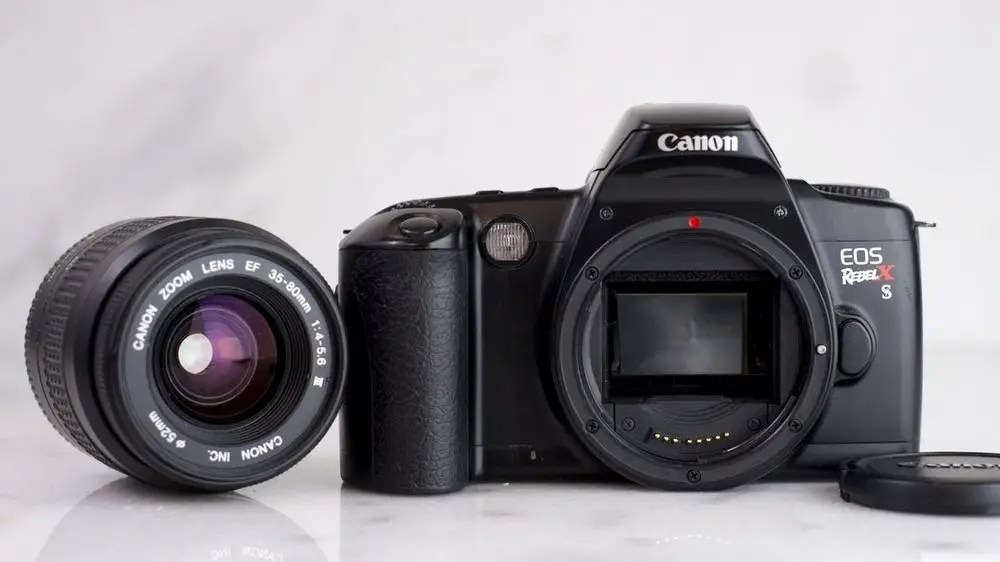
Canon EOS Rebel XS / EOS Kiss / EOS 500
Another plastic fantastic that shoots above its class is the Canon EOS Rebel XS, also called the Kiss in Asia and the EOS 500 in Europe. Designed for the enthusiast, the Rebel has a range of automatic and programmable modes designed to assist the photographer to get the best exposures they can. Another model that shoots just like today’s digital cameras, it’ll feel comfortable for anyone who’s used a DSLR.
This is another camera that sold by the ship load. A decent example today with a mid-range zoom lens generally sells for around $75-100. Shopping around has seen some bargains to be had. My pal Keith bought a Canon EOS 300V with two lenses for less than £50. (That’s around $65 at time of writing) The Rebel uses Canon’s lauded EF mount lenses, ensuring a good supply of decent used lenses is never too far away at a reasonable price – and if you’re a Canon DSLR user, many of the lenses will swap over!
Nikon F50 / F55 / F60 / F65
Just like the Minolta and Canon listed above, the Nikon F50/55/65 range of cameras were designed for mid-level photographers in the heyday of film. They have the familiar feel that I have come to love about my Nikon DSLRs. The F55 and F65 in particular have very similar controls to my Nikon D90.
A good example with a pair of lenses can be had for a bargain price if you are willing to shop around. I have seen an F55 with a Nikon 28-100mm zoom lens on sale for around $65 online that will quite happily give whoever bought it a good decade of joy and excellent pictures.
They are solid and dependable, underneath the plastic case is a metal chassis that everything is fixed onto giving the user peace of mind that it has can handle a wide range of conditions. They use Nikon’s excellent AF Nikkor D and G range of lenses and cheap Batteries.
[Find a Nikon F-series camera on eBay here]
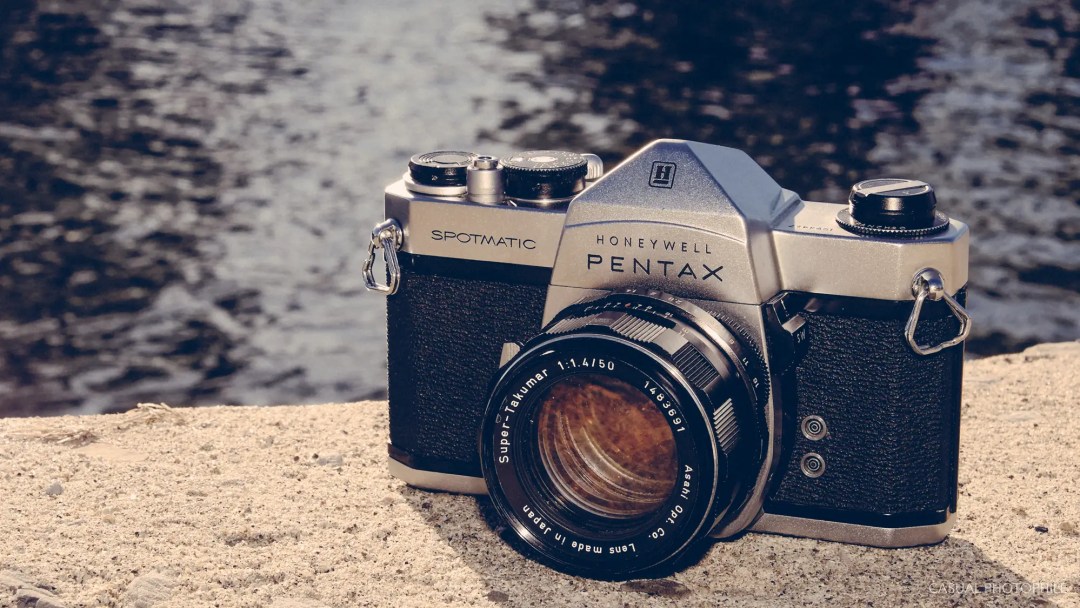
The Camera That I Chose – Pentax Spotmatic
Now, this last suggestion won’t be for everyone, and it’s included here more for conversation than as a real suggestion for brand new film users. But when I came back to film after a fifteen year hiatus, I had to pick just one camera. All I wanted was a basic mechanical camera that had a light meter. No fancy bells and whistles, I just wanted to learn how to take a photo and I didn’t have a lot of money to spend. (I’m still working on taking a good photo.) The camera that I settled on was a Pentax Spotmatic.
The Spotmatic range consists of interchangeable lens 35mm film SLR cameras with an M42 lens mount and a choice of lenses that is mind boggling to this day. It is a fully mechanical camera with a simple match needle light meter that is visible through the viewfinder. The battery is only needed for the light meter to function.
But I really should emphasize that this camera does not feature any shooting aids (beyond a light meter) nor autofocus or semi-auto or full auto exposure. And it’s a bit archaic. Thus, I can only recommend this camera for those who want to dive in and really learn about photography in an old school way.
When looking for yours, be sure to buy from a reputable camera shop online, or from a seller who guarantees the camera to work.
[Find a Pentax Spotmatic on eBay here]
Buyer’s Guide and Final Thoughts
This guide is for those new shooters who want to try film, but are put off by the suggestion that they need a super-expensive or super-niche film camera. We think the cameras in this article will give folk new to photography a decent start whatever their level of experience and confidence.
The only caveat we have is to make sure you know the camera you buy is working properly, has a guarantee if at all possible and is clean and presentable. The best way to ensure this is to buy from a reputable camera shop.
Ebay can be a minefield of turds dressed up as diamonds so give thought to buying from a reputable retailer. No doubt our fearless leader James will put a link to his shop at the end of this article, where you can pick up a decent 35mm film camera for a very reasonable price, but there are many excellent shops doing great work to spread the joy of cameras and photography – Brooklyn Film Camera, Blue Moon Camera, and many more.
There’s a camera out there for everyone. All you need to do is determine your budget and your needs and we are confident you won’t go wrong with any of our choices today. Happy shooting!
Browse for a film camera on eBay
Buy one from our own F Stop Cameras
Follow Casual Photophile on Twitter, Facebook and Instagram
[Some of the links in this article will direct users to our affiliates at B&H Photo, Amazon, and eBay. By purchasing anything using these links, Casual Photophile may receive a small commission at no additional charge to you. This helps Casual Photophile produce the content we produce. Many thanks for your support.]
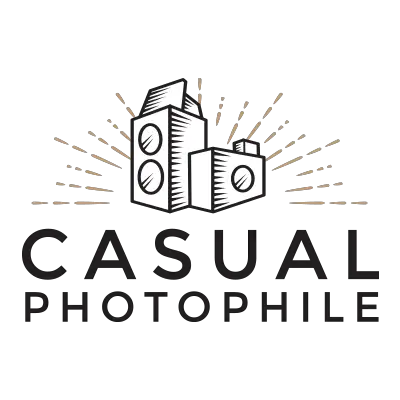
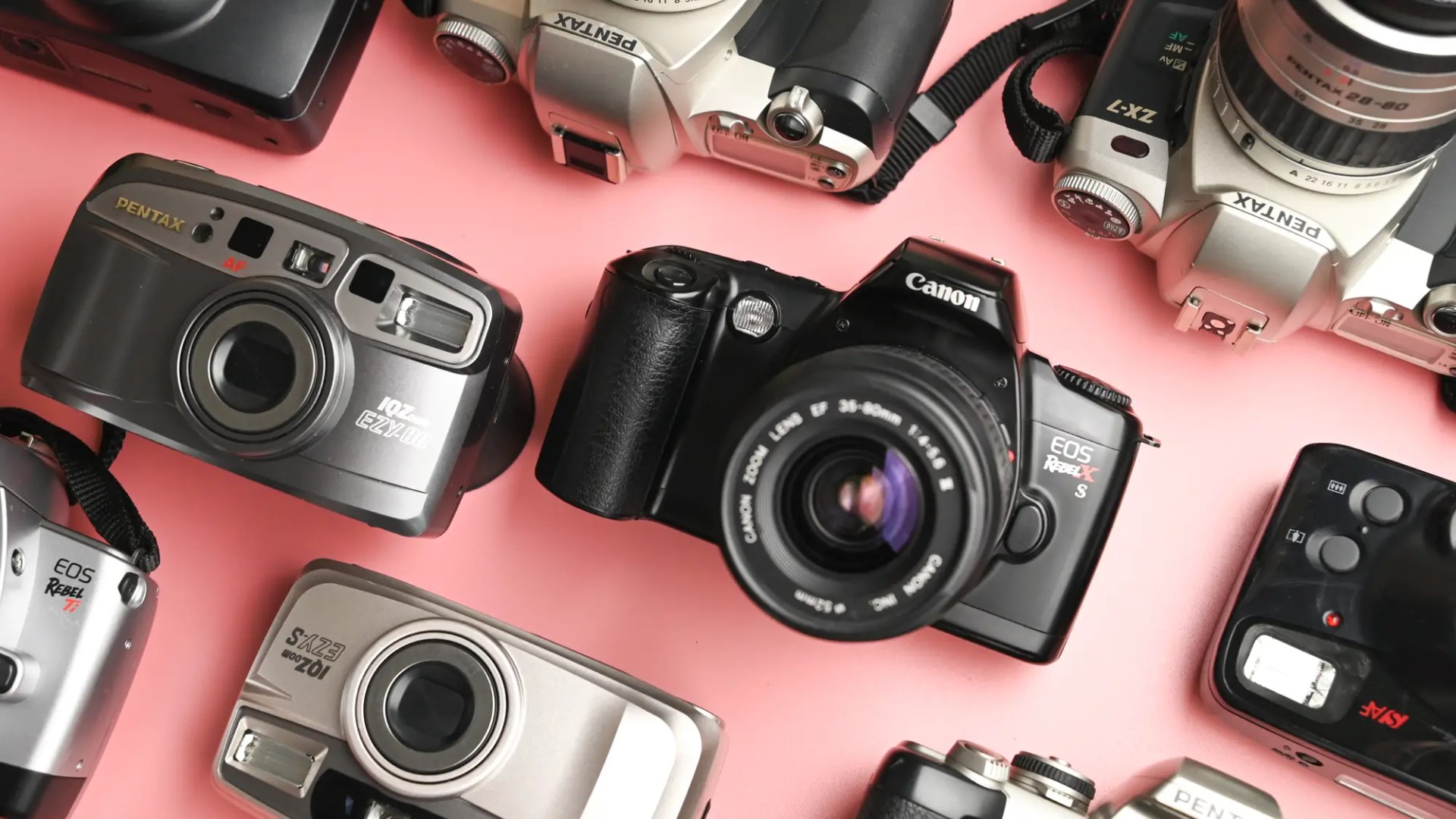
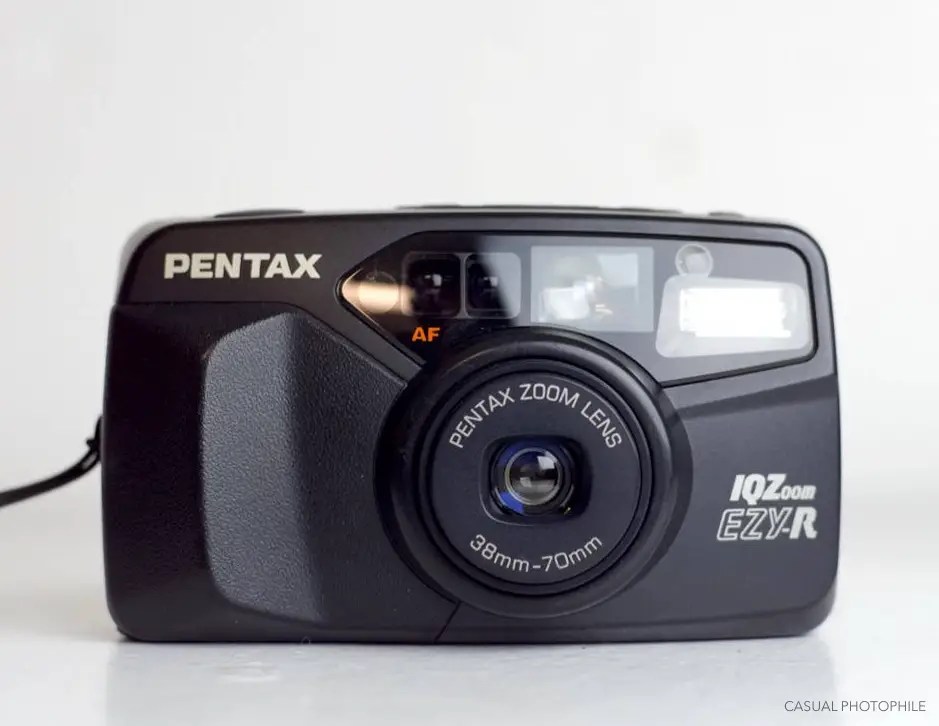
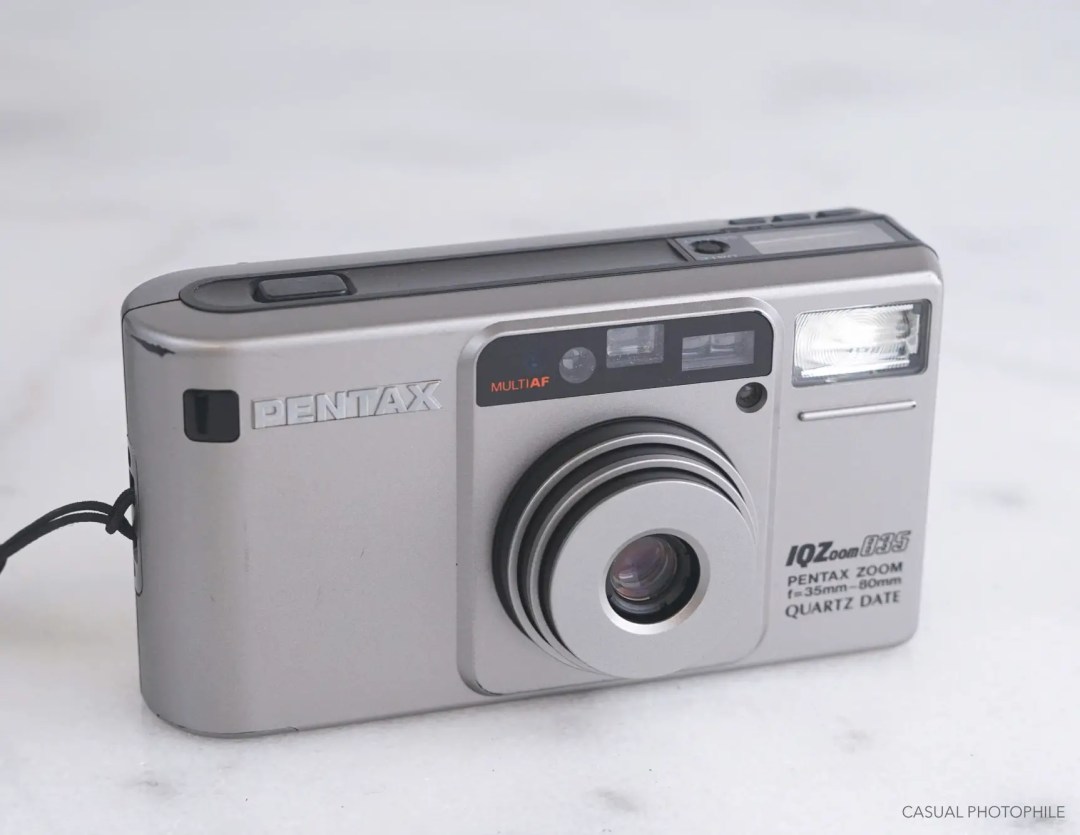
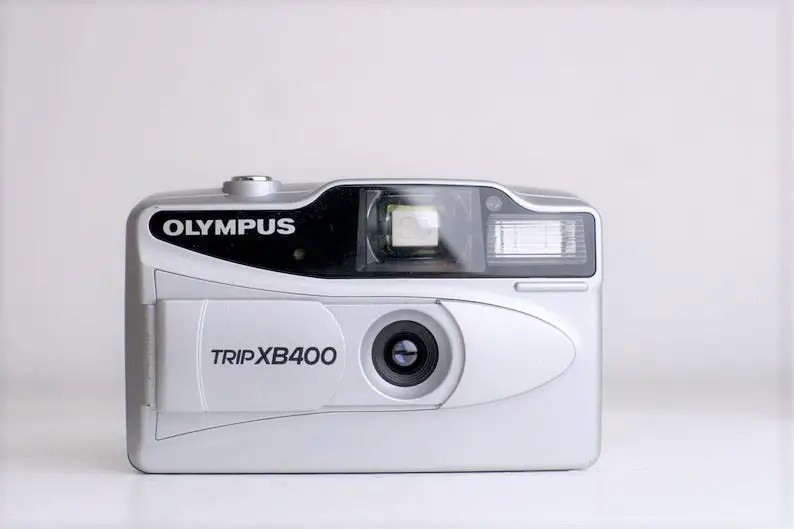
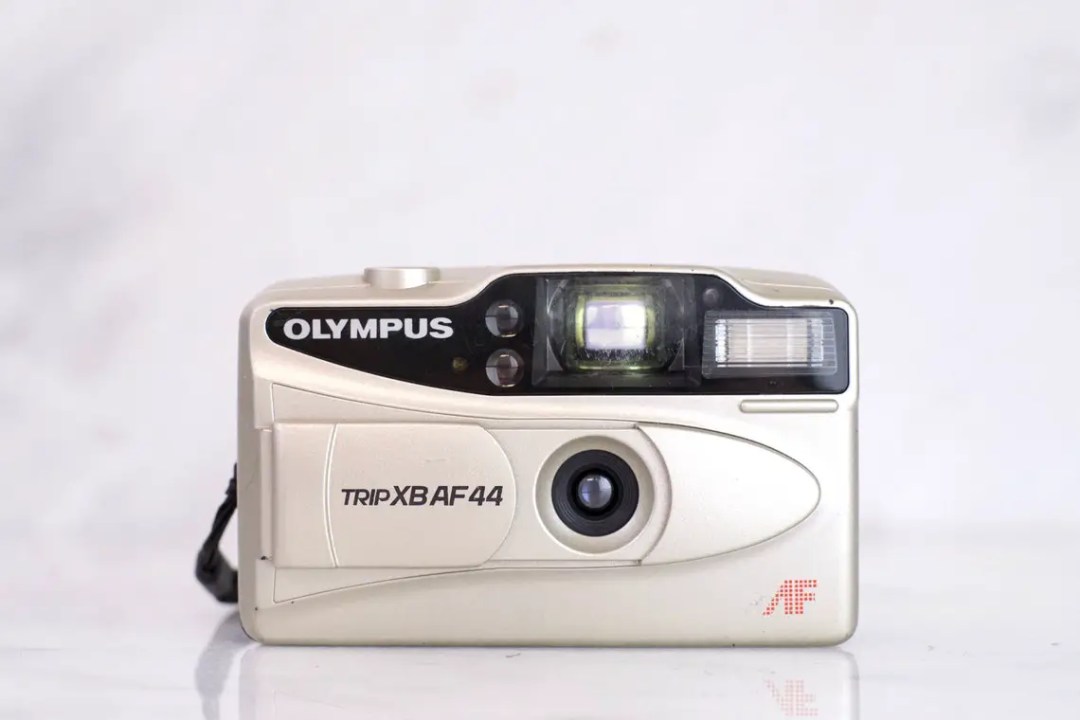
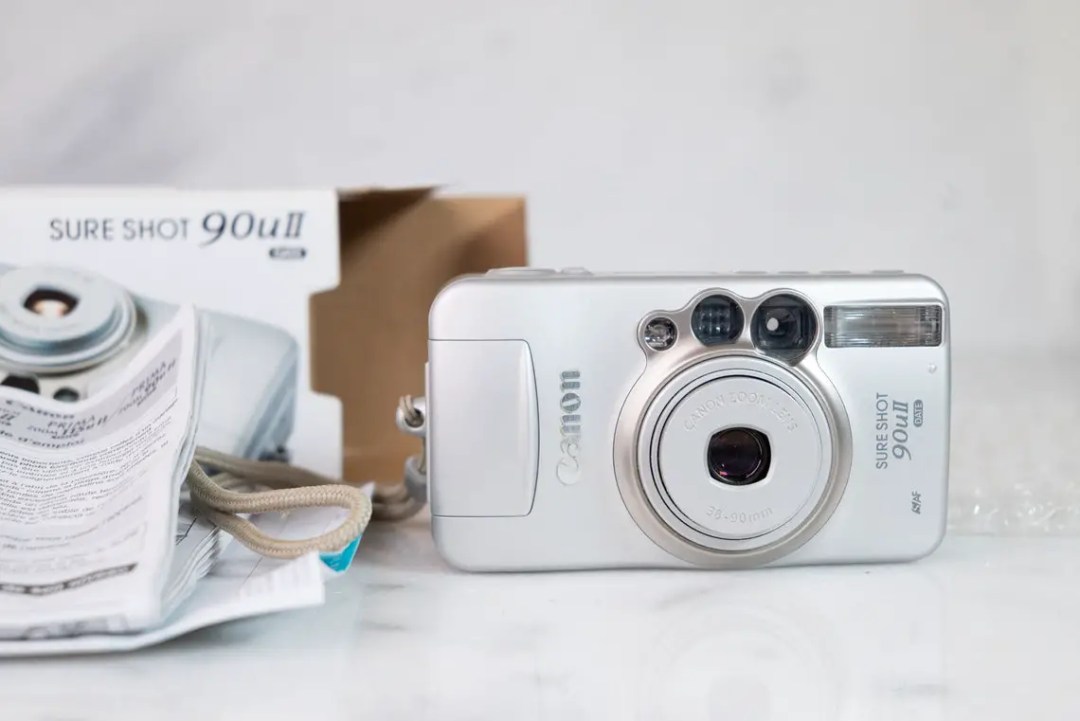
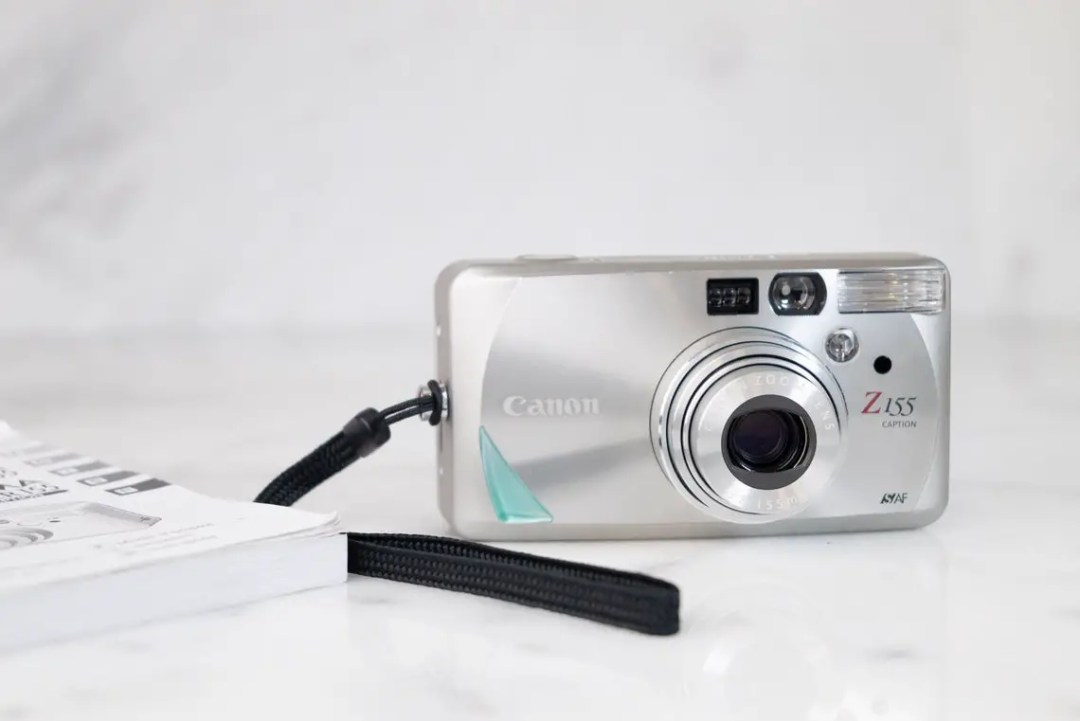
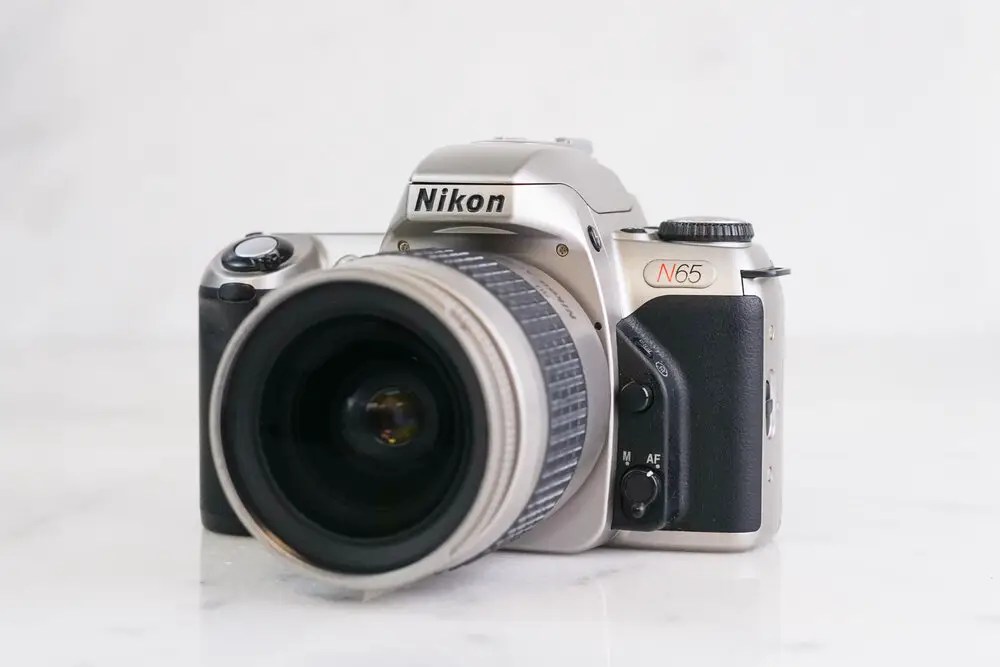
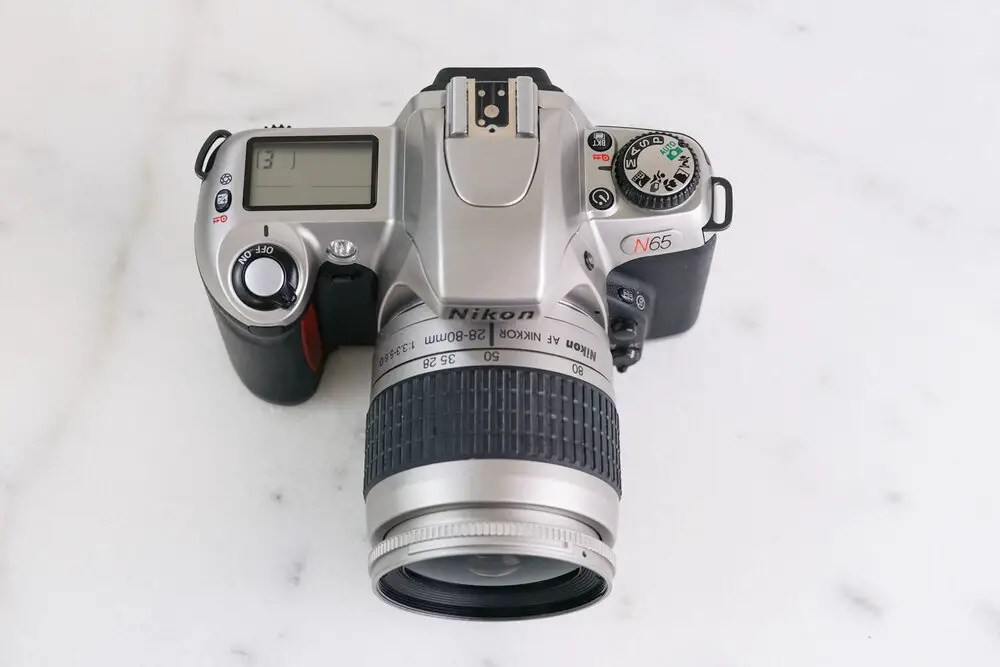

This is a great little guide, thank you Jim! I agree that the Pentax IQZoom/Espio series is a good choice.
I know that this guide can’t be extensive, but I’m slightly disappointed that there is no mention of fixed-lens rangefinders for those who want more control of their photography. There were a good number of them produced in Japan during the 60’s and 70’s. The key thing is to find one that allows full manual exposure control–there were a lot of autoexposure ones in the later years. Having a fixed lens means you learn on one lens vs. all the choices with SLRs, there’s no “this shot would be better if I was using a different lens” problem. A fixed-lens rangefinder is how I got back into film a couple years ago.